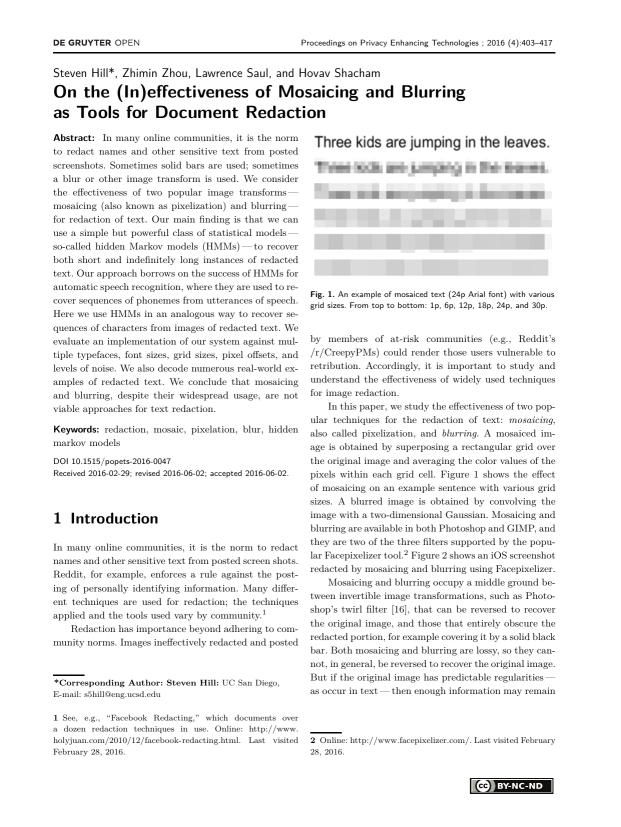On the (In)effectiveness of Mosaicing and Blurring as Tools for Document Redaction
Authors: Steven Hill (UC San Diego), Zhimin Zhou, Lawrence Saul, Hovav Shacham
Volume: 2016
Issue: 4
Pages: 403–417
DOI: https://doi.org/10.1515/popets-2016-0047
Abstract: In many online communities, it is the norm to redact names and other sensitive text from posted screenshots. Sometimes solid bars are used; sometimes a blur or other image transform is used. We consider the effectiveness of two popular image transforms — mosaicing (also known as pixelization) and blurring — for redaction of text. Our main finding is that we can use a simple but powerful class of statistical models — so-called hidden Markov models (HMMs) — to recover both short and indefinitely long instances of redacted text. Our approach borrows on the success of HMMs for automatic speech recognition, where they are used to recover sequences of phonemes from utterances of speech. Here we use HMMs in an analogous way to recover sequences of characters from images of redacted text. We evaluate an implementation of our system against multiple typefaces, font sizes, grid sizes, pixel offsets, and levels of noise. We also decode numerous real-world examples of redacted text. We conclude that mosaicing and blurring, despite their widespread usage, are not viable approaches for text redaction.
Keywords: redaction, mosaic, pixelation, blur, hidden markov models
Copyright in PoPETs articles are held by their authors. This article is published under a Creative Commons Attribution-NonCommercial-NoDerivs 3.0 license.

